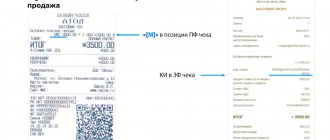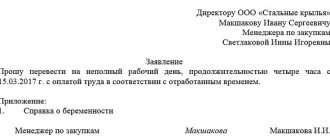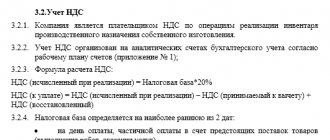Any officially employed person is entitled to 28 days of vacation. Those who work in difficult conditions deservedly get more rest. But what if a person refuses vacation for personal reasons or due to work needs? The law allows vacation to be replaced with monetary compensation, but not always.
We tell you in what cases an employer can give money in exchange for vacation and how to properly arrange such a replacement.
If you want to learn useful details, read the entire article. If you are in a hurry, go to the “Briefly about the main points” section - the key points are there.
When can an employee’s vacation be replaced with money?
According to labor law, every employee has the right to 28 days of paid leave for each year worked. Vacation ensures that a person gains strength and continues to work without risk to health. Therefore, it is prohibited to replace the main vacation with monetary compensation. We will talk about the punishment for violating this rule further.
There are only two situations when an employer can compensate vacation with money, namely:
The employee requests to replace with money an additional part of the vacation exceeding 28 calendar days.
Some categories of employees are entitled to additional (and extended basic) vacations. In total, their annual leave lasts more than 28 days. These are the workers:
- workers in dangerous or harmful conditions;
- disabled people;
- with irregular working hours;
- workers in the Far North and similar areas;
- pedagogical and medical workers.
The length of additional leave varies. For people with irregular working hours - three calendar days, for working disabled people - two days. The duration is established by the Labor Code and relevant federal laws.
In accordance with Art. 126 of the Labor Code, an employee can write a statement and ask for money instead of “extra” vacation days. The employer decides whether to send the employee on vacation or pay him money. However, the law clearly prohibits replacing additional leave with money if we are talking about:
- pregnant women;
- minors;
- people employed in jobs with harmful and dangerous conditions.
Such employees can receive payment for unused vacation only upon dismissal. Reason: Art. 126 of the Labor Code.
An employee who has unpaid vacation leave is dismissed.
In this case, compensation for unused vacation must be included in the final calculation.
Until 2021, disputes arose: upon dismissal, should the unpaid vacation days be compensated for all or not for the entire time of work? If an employee has not been on vacation for three years, does management have to pay him for three vacations? It's a bit expensive, you know.
The courts in their decisions referred to ILO Convention No. 132. The convention allows you to take a vacation not entirely, but in parts. At first, the employee can take two weeks of uninterrupted rest. He must take the remaining two weeks of vacation no later than 18 months after the end of the year for which he took the vacation. 18 months have passed - the rest of the vacation has burned out. This means no compensation is due.
In 2021, the Constitutional Court put an end to the disputes and explained that the provisions of the convention were interpreted incorrectly by the courts. The employee must actually use the remainder of the vacation within 18 months or it will expire. But we are talking about employees who continue to work. This restriction was specially established so that workaholics could also rest.
If an employee resigns, the employer is obliged to compensate in money for vacations not taken during the entire period of work. The 18-month limit does not apply to an employee planning to resign.
Example.
Marina works at Podsnezhnik LLC as a senior manager. She got a job on May 10, 2018. Marina's average daily earnings are 2,500 rubles. Three years later, Marina had a row with the new director and decided to quit. For each year worked, she is entitled to 28 calendar days of rest. However, Marina is not a senior manager for nothing: she was only able to rest for all 28 days in 2021. And in 2019 and 2021, Marina took only two weeks of vacation. It turns out that instead of 84 days, she took 56 days off. And 28 days remained unused. This means that upon dismissal, Podsnezhnik LLC will pay Marina 70,000 rubles. (2,500 x 28) as compensation for unused vacation days. And if she doesn’t pay, Marina will go to court, demand this money and get it.
Important.
Art. 124 of the Labor Code prohibits an employer from not allowing an employee to go on vacation for two years in a row. The only exception: with the consent of the employee, vacation can be postponed to the next year if the reason for the postponement is extremely significant. For example, the only children’s doctor left in the hospital because the other two fell ill with Covid. The employee’s consent to postpone the vacation is a mandatory condition.
Question
According to Art. 115 of the Labor Code of the Russian Federation, the duration of the annual basic paid leave is 28 calendar days. According to Art. 122 of the Labor Code of the Russian Federation, must be provided to the employee annually. This means that vacation is granted for each working year, which, unlike the calendar year, is calculated not from January 1, but from the date the employee was hired. That is, the beginning of the period for which the employee is granted leave is the day of hiring, and not the beginning of the calendar year.
By agreement between the employee and the employer, annual paid leave can be divided into parts, one of which should not be less than 14 calendar days (Part 1 of Article 125 of the Labor Code of the Russian Federation). Since the concept of “annual leave” implies an employee’s leave for a certain period (working year), the employee must use all 28 calendar days not for a specific calendar year, but for his working year, calculated from the date of employment in the organization.
This is important to know: Vacation while saving a place in kindergarten
Thus, if an employee decides to divide his vacation into parts, one of the parts of his vacation for the current working year must be at least 14 days. Otherwise, a violation of Part 1 of Art. 125 of the Labor Code of the Russian Federation, since part of the continuous vacation, amounting to at least 14 calendar days, must be provided to the employee for each period of his work (working year).
In addition, the presence of debt on annual leave for the last working year is a violation of Art. 122 of the Labor Code of the Russian Federation, which requires that leave be provided annually in full. Vacation arrears must be repaid by agreeing with the employee on the time for providing him with the seven days remaining from the previous year. These seven days can be added to the first part of the vacation for the current year (it turns out 14 + 7 = 21 days), and the remaining days can be used as the employee originally intended, or choose another option. But one of the parts of the vacation for the current working year must be at least 14 calendar days.
Details in the System materials:
1. Answer: Is it possible to divide annual paid leave into parts?
Nina Kovyazina, Deputy Director of the Department of Education and Human Resources of the Russian Ministry of Health
An employee can take a one-time annual leave of total duration or rest several times a year.* In this case, the decision to divide the leave into parts must be mutual and confirmed by documents. An employee can reflect his wishes regarding the division of vacation in a free-form application. If the employer proposes to divide the vacation, then he can send the employee a corresponding notice, providing a special line in it where the employee will write whether he agrees or not to such a division. If the question of dividing vacation arises before drawing up the vacation schedule, then the agreements reached should be reflected in the schedule and indicate all parts of the vacation that will be provided to the employee.
It should be noted that at least one of the parts of the divided vacation must be at least 14 days. The employee can use the remaining days as he pleases. If the administration of the organization does not object, then he has the right to use even a few days of vacation from the remaining half.
This procedure for dividing annual leave into parts is provided for in Article 125 of the Labor Code of the Russian Federation.
An example of dividing annual basic leave into parts
With the permission of the organization’s administration, accountant V.N. Zaitseva, whose vacation is 28 calendar days, decided to divide her vacation time into several parts. According to the statement, she is taking a vacation:
from January 16 to January 18 inclusive (3 days);
from March 12 to March 17 inclusive (6 days);
from July 2 to July 18 inclusive (17 days);
from August 1 to August 2 inclusive (2 days).
The provision of leave in this manner was reflected in the organization's leave schedule.
2. Answer: What to do if an employee has accumulated unused vacations over several years
Nina Kovyazina, Deputy Director of the Department of Education and Human Resources of the Russian Ministry of Health
If, in violation of the law, vacation was not provided and the employee has accumulated several unused vacations (parts thereof), then they do not “burn out.” If an employee has unused vacations, in order to avoid administrative liability, the employer must, if possible, provide them and thereby repay the vacation debt (at one time or in parts).
In addition, part of the vacation can be compensated with money. In this case, only the part exceeding 28 calendar days of annual leave for each working year is subject to compensation. An employee can receive the full amount of compensation for all accumulated vacations only in the event of dismissal, for example, by agreement of the parties. After registration of dismissal and payment of vacation arrears, the employee can be rehired.
Such conclusions follow from the totality of the provisions of Articles 126, 127, 78, 64 of the Labor Code of the Russian Federation.
3. Answer: How to reflect the period in a vacation order if vacation is granted for several years at once
Nina Kovyazina, Deputy Director of the Department of Education and Human Resources of the Russian Ministry of Health
If in previous years the employee had unused days of annual paid leave or the employee did not use vacation at all for several years and decided to use them this year, then the order for granting leave must be filled out in the general manner. In this case, in the line “for the period of work” you should indicate:
a period of appropriate duration if leave is granted for several consecutive years (for example, “from September 1, 2010 to August 31, 2012”);
separately (separated by commas) indicate several periods if they are inconsistent (for example, “from September 1, 2009 to August 31, 2010, from September 1, 2011 to August 31, 2012”).
At the same time, in section A “Annual basic paid leave” of the order, indicate the total number of days of leave provided, regardless of how many years and for what periods these days are provided.
An example of registration of granting leave to an employee for several years at once
Alpha employee E.E. Gromova did not fully use her holidays in previous years. In the current year 2012, she uses the accumulated vacation days for 2009 - 1 calendar day, for 2011 - 28 calendar days and part of the vacation for 2012 - 3 calendar days. The total duration of vacation is 32 (1 + 28 + 3) calendar days.
Gromova was hired on December 29, 2008. The periods of work for which leave is granted are from December 29, 2008 to December 28, 2009, from December 29, 2010 to December 28, 2011, from December 29, 2011 to December 28, 2012.
Based on the employee’s application, the HR department prepared an order using the unified form No. T-6.
How to apply for monetary compensation in lieu of additional leave
When an employee continues to work for the company (does not quit) and wants to receive money in exchange for “extra” vacation days, the procedure for applying for compensation is as follows:
Step 1.
Receive a statement from the employee.
The employee can write the application in free form. The main thing is that it contains a link to Art. 126 TC, number of additional vacation days and period. Here is a sample application:
Step 2.
Issue the order and familiarize the employee with it.
You may not accept an application from an employee. If there is no urgent need, let him rest for more than 28 days. If you think it would be more appropriate to pay money for additional days, accept the application and issue an order. Here is an example of an order:
Do not forget to familiarize the employee and responsible persons (HR officer, accountant) with the order against signature.
Step 3.
Enter data into the employee’s personal card and vacation schedule.
In our example, the entry in the vacation schedule will look like this: “3 calendar days of additional paid leave for 2020/2021 were replaced by monetary compensation based on order No. 42 dated June 10, 2021.”
In Section VIII of the employee’s personal card you must enter:
- The number of days that are replaced by money in column 4 “Number of calendar days of vacation.”
- Dash lines in column 5 “Start date” and column 6 “End date”.
- The date and number of the order in column 7 “Bases”.
Sample filling:
Compensation for unused vacation days is calculated using the formula:
Compensation = Average daily earnings x Number of vacation days replaced
In case of dismissal, the accountant must calculate the payment for unused vacation and issue it along with the calculation. No additional application from the employee is required. We talked about how to calculate compensation upon dismissal in the article “An employee quits. How to pay compensation for unused vacation?
Error one
This position of the company is a fairly common misconception. And it is connected with the fact that the employer incorrectly interprets the mandatory norm of the Labor Code, which states that employees are granted annual leave (Article 114 of the Labor Code of the Russian Federation), that is, employees do not take leave at their own discretion, but are given leave without fail, regardless of their wishes.
Refusal to use vacation is not a reason for endlessly postponing vacation. On the contrary, the employer must act strictly in accordance with the requirements of the Labor Code according to the following algorithm:
- plan the provision of vacations to employees in the next calendar year, establishing their priority in the vacation schedule (Article 123 of the Labor Code of the Russian Federation);
- familiarize employees with the vacation schedule against signature (Part 2 of Article 22 of the Labor Code of the Russian Federation);
- no later than two weeks before the start of the vacation, notify the employee about this against signature (Part 3 of Article 123 of the Labor Code of the Russian Federation);
- issue an order to grant vacation to the employee during the period established by the vacation schedule, because the schedule itself is mandatory for both the employer and the employee (Part 2 of Article 123 of the Labor Code of the Russian Federation);
- from the day the vacation begins, by order, put a mark on the working time sheet (code “OT” or “09” - if the employee is on annual main paid leave, and code “OD” or “10” for annual additional paid leave).
This is important to know: How to properly fill out a vacation application: sample 2021
Providing an employee with annual paid leave without his consent cannot be considered as coercion, because using this type of leave is not only the right, but also the obligation of the employee.
How will an employer be punished if he replaces basic leave with compensation?
Let us reiterate: you can compensate with money part of the vacation exceeding 28 days, or vacation unused during the entire period of work if the employee quits.
A basic vacation is not a way to speculate. The employer is obliged to provide it and the employee to take it. It is prohibited to replace 28 days of basic vacation with money. Even if the employee doesn’t mind. Such a replacement will be regarded as a violation of labor laws. The labor inspectorate, if it finds out, will fine you under Art. 5.27 Code of Administrative Offences. For officials, a fine of up to 20 thousand rubles, for organizations up to 70 thousand rubles.
Postponing vacation to the next year without the employee’s consent will also be considered a violation of labor laws.
Employer's liability
It should be noted that dividing into parts a full vacation, the dates of which have already been approved by the schedule, is a right, but not an obligation of the employer. He can be held accountable if the vacation is divided into periods, none of which is at least 14 days.
Thus, the main vacation can be legally divided into parts. But one important condition must be observed: one of the rest periods must be equal to or exceed 14 days. Ignoring this rule by an employer may result in a fine.
This is important to know: Is it possible to take a vacation with subsequent dismissal without working off







